Application
equipment
In this section you will find a range of practical information related to our solutions. In the articles, we share our experience, discuss implementation steps and highlight good practices. It is a reliable source of information and advice on the provision of drinking water in public spaces, the legal regulations in this area, the benefits of installing drinking water dispensers and the technological aspects in this field.
We look forward to reading!

Modern offices are placing increasing emphasis on improving working conditions and increasing employee efficiency. One simple yet effective solution is to introduce tap water dispensers into the office space.
Tap water dispensers not only offer access to fresh water in a convenient manner, but bring with them a number of benefits that contribute to the overall comfort at work. A constant supply of water enables employees to stay optimally hydrated, which benefits their ability to concentrate and their overall wellbeing.
In addition, water dispensers are also an economical solution. They eliminate the need to purchase bottled water, which not only generates financial savings, but also reduces the negative environmental impact associated with the production and disposal of plastic packaging.
Tap water dispensers are therefore an effective way of enhancing office comfort, supporting a healthy lifestyle through easy access to fresh water. At the same time, they are cost-effective solutions that can help reduce company operating costs, making them an ideal choice for modern, role-conscious employers.
Introducing water dispensers to the office, which offer not only drinking water but also sparkling water, is a step towards modernity and employee satisfaction. Why opt for dispensers with a carbonated option?
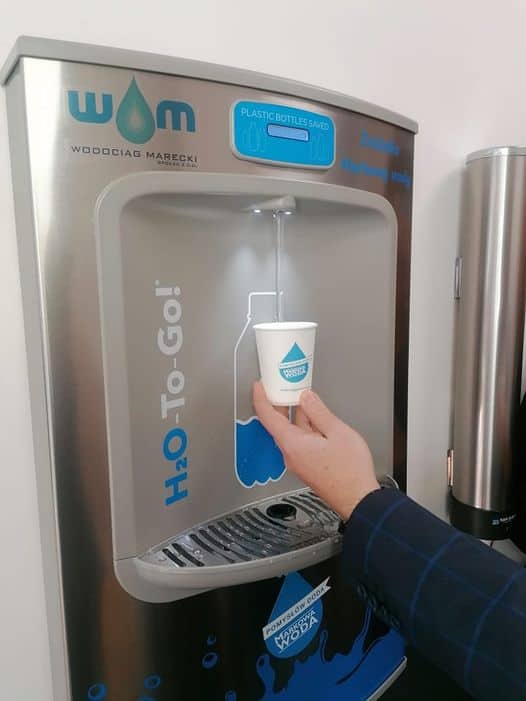


Firstly, the variety of flavours. Sparkling water is a great alternative for people who want to refresh themselves with a refreshing drink without extra calories or artificial substances. It's the perfect way to add variety to your daily water drinking and give your employees a new taste experience without having to turn to fizzy drinks with added sugar.
Secondly, health and comfort. Sparkling water is often considered gentler on the digestive system than traditional fizzy drinks, making it an excellent choice for those concerned about their health. Additionally, being able to consume sparkling water without having to purchase bottled drinks has a positive impact on the environment, reducing the amount of plastic produced and disposed of in the office.
Thirdly, creativity and motivation. Water dispensers with a carbonated option are a modern solution that draws the attention of employees and increases the attractiveness of the office space. It can be an additional motivating element for a healthy lifestyle, while increasing employee satisfaction with working conditions.
Water dispensers with a carbonated option are an innovative solution that not only brings a modern touch to the office, but also focuses on healthy and varied drinking options. It is therefore worth including them in your designs, as this will certainly have an impact on their attractiveness, functionality and will be welcomed by your audience.
In this section you will find a range of practical information related to our solutions. In the articles, we share our experience, discuss implementation steps and highlight good practices. It is a reliable source of information and advice on the provision of drinking water in public spaces, the legal regulations in this area, the benefits of installing drinking water dispensers and the technological aspects in this field.
We look forward to reading!
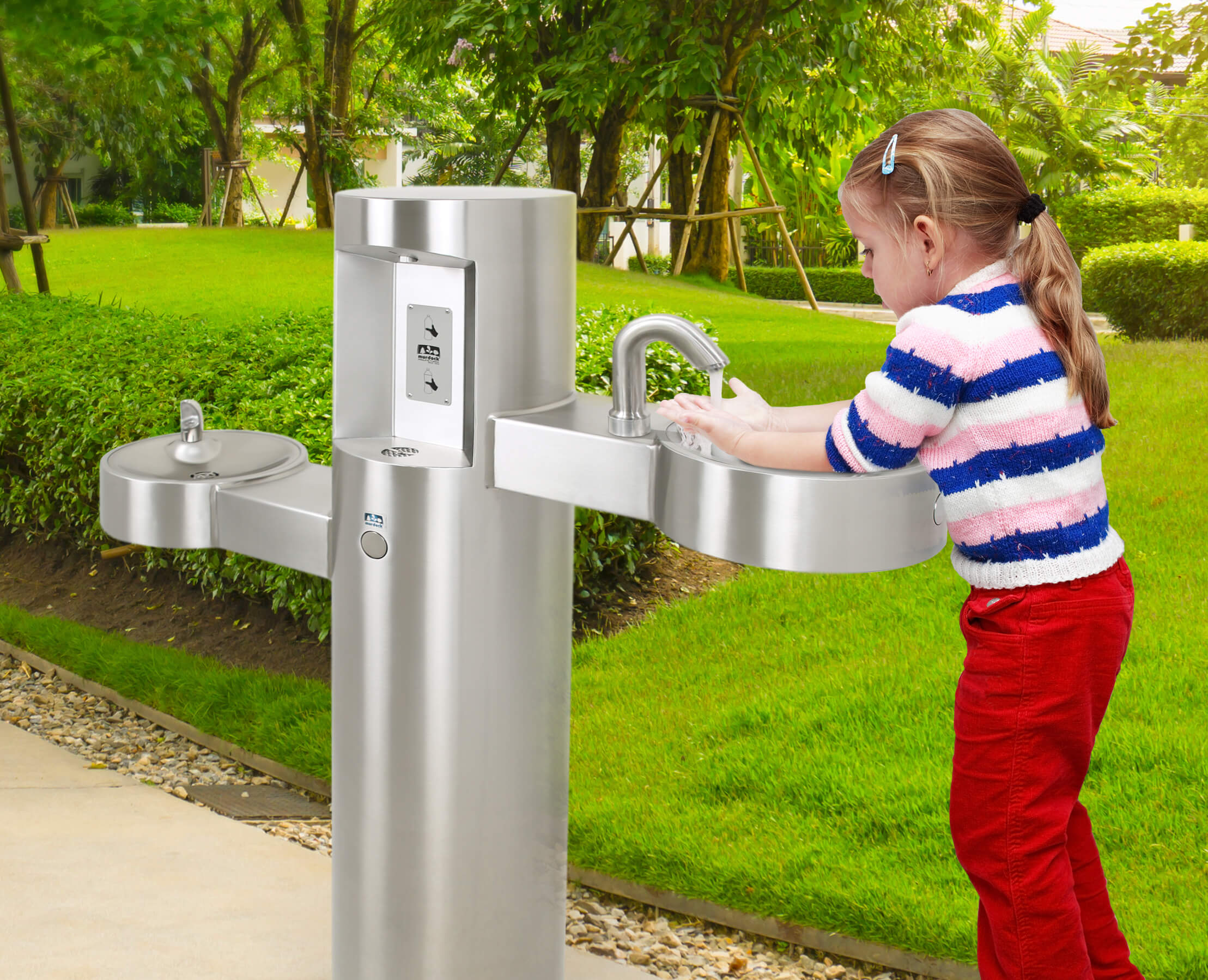
In the wake of recent years and events, authorities, municipalities, companies and designers alike are looking for solutions to make public spaces not only more functional, but also safer. Hygiene is a very important issue at present, so new solutions are appearing on the market all the time, which make it possible to maintain hygiene and promote healthy behaviour in society.
While hand disinfection stations of various types are very common in buildings and indoor facilities, such solutions are lacking in public spaces. Occasionally, dispensers of various kinds appear, but they often lack disinfectant, but above all, they are not touch-free stations, which is so important in the current reality.
With these problems in mind, an American manufacturer of sprinklers and drinking water stations developed new devices that would not only provide unlimited access to drinking water for all who were thirsty, but also provide a convenient station where everyone could wash their hands while maintaining the highest level of hygiene. This is how, among other things, the Wash-N-Go!which combines several functions: a spring for direct consumption of water, a dispenser for filling bottles, a station for contactless hand washing and can also be equipped with a pet watering station. The design is vandal-proof and ensures comfortable and safe use.
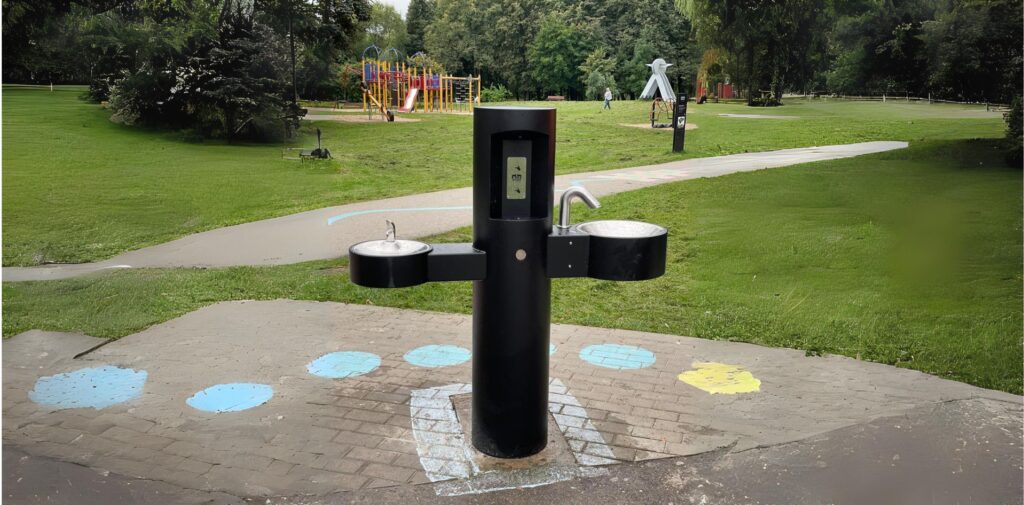
These types of solutions are perfect for parks, playgrounds, cycle paths or promenades. They are a very useful architectural element, not only reducing the amount of plastic waste entering the environment (ecological effect), but also teaching the public about healthy and useful behaviour (educational effect).
As far as the environmental aspect is concerned, drinking water spigots have long been a significant part of it. Installed in public spaces, they encourage people to give up drinking water from plastic bottles in favour of glass or reusable bottles, as they allow them to be conveniently filled with clean and fresh water straight from the mains. They teach pro-environmental habits (we drink tap water, not bottled water). These are highly functional elements desirable in urban space, increasingly appearing in civic budget projects. For this reason, they are also of interest to city managers and local government officials.
Nowadays, when investing in a new park, sports centre or playground, this type of solution is taken into account. It is not uncommon for the installation of a sprinkler or drinking water station to be one of the requirements for investors and contractors. Therefore, this type of equipment appears in projects for a reason, but it is important to remember to go for the best and proven solutions. Which is to say? That is, fault-free, vandal-proof units whose design makes it impossible to interfere with their internal components or dismantle parts. They should be low-maintenance, weatherproof and wear-resistant - in short, they should last for years.
Water sprinklers and water stations are already quite popular in our country and now comes a new one. Now we are betting on another aspect, i.e. on sprinklers combined with the additional function of a hand-washing station. This is what the Wash-N-Go series provides! Thought through to the smallest detail in order to respond to current requirements and realities.
In this section you will find a range of practical information related to our solutions. In the articles, we share our experience, discuss implementation steps and highlight good practices. It is a reliable source of information and advice on the provision of drinking water in public spaces, the legal regulations in this area, the benefits of installing drinking water dispensers and the technological aspects in this field.
We look forward to reading!
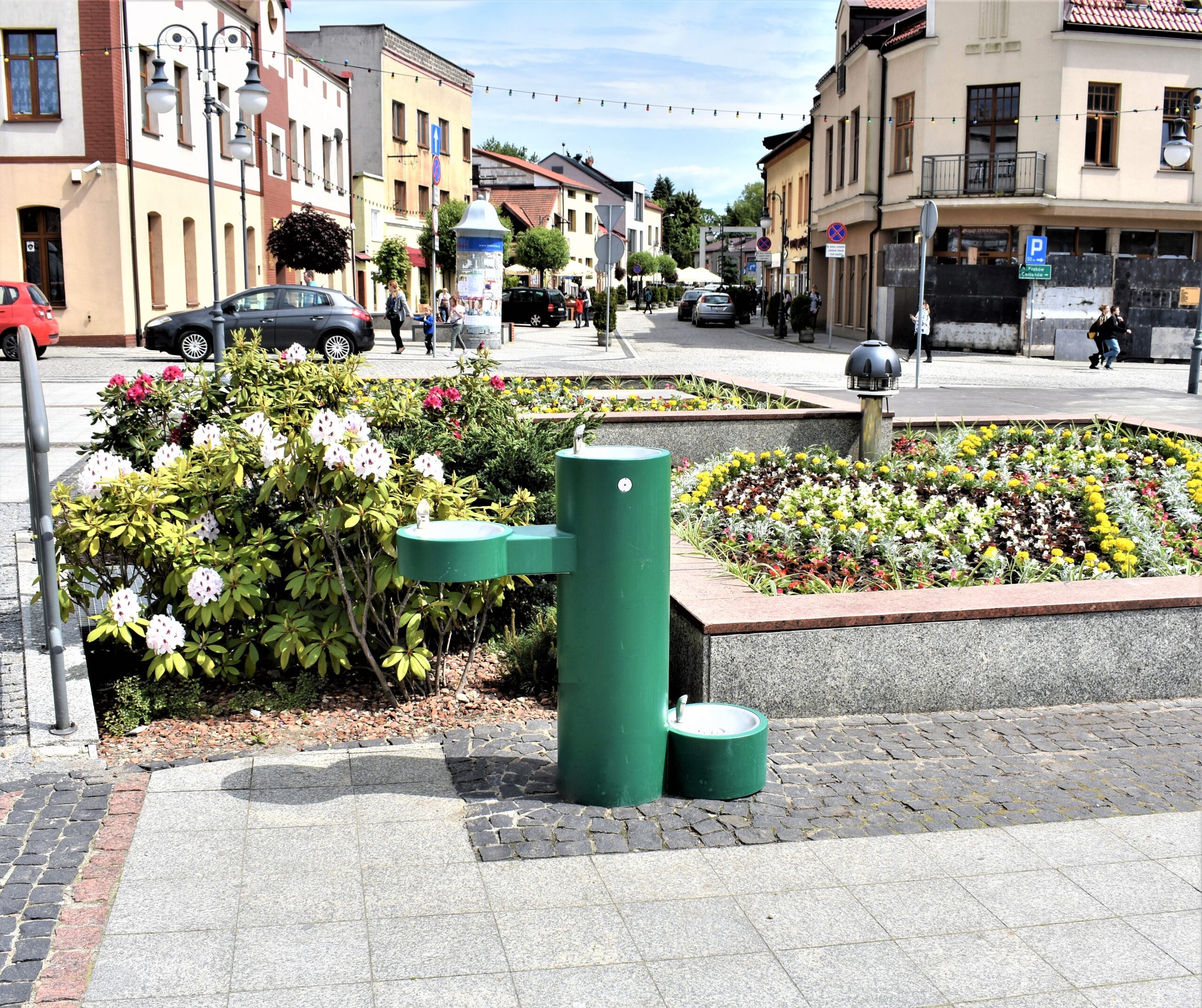
Designers have many reasons to include springs and drinking water sources in their designs. Here are some key arguments in favour.
The placement of drinking water dispensers in public places encourages people to drink water and supports a healthy lifestyle. Access to drinking water on the streets, in parks or in public buildings can help reduce the consumption of sweetened drinks, which is good for health.
Access to drinking water from the tap or public springs reduces the need to buy bottled water. This in turn leads to a reduction in the production of plastic bottles and packaging, which has a significant impact on reducing plastic pollution and the burden on the environment.
By including sprinklers in their designs (e.g. in parks, by squares or outdoor gyms), designers contribute to creating an ecological image of the locality or facilities. This can be perceived positively by residents and visitors, and attract tourists who value the environment and sustainable practices.
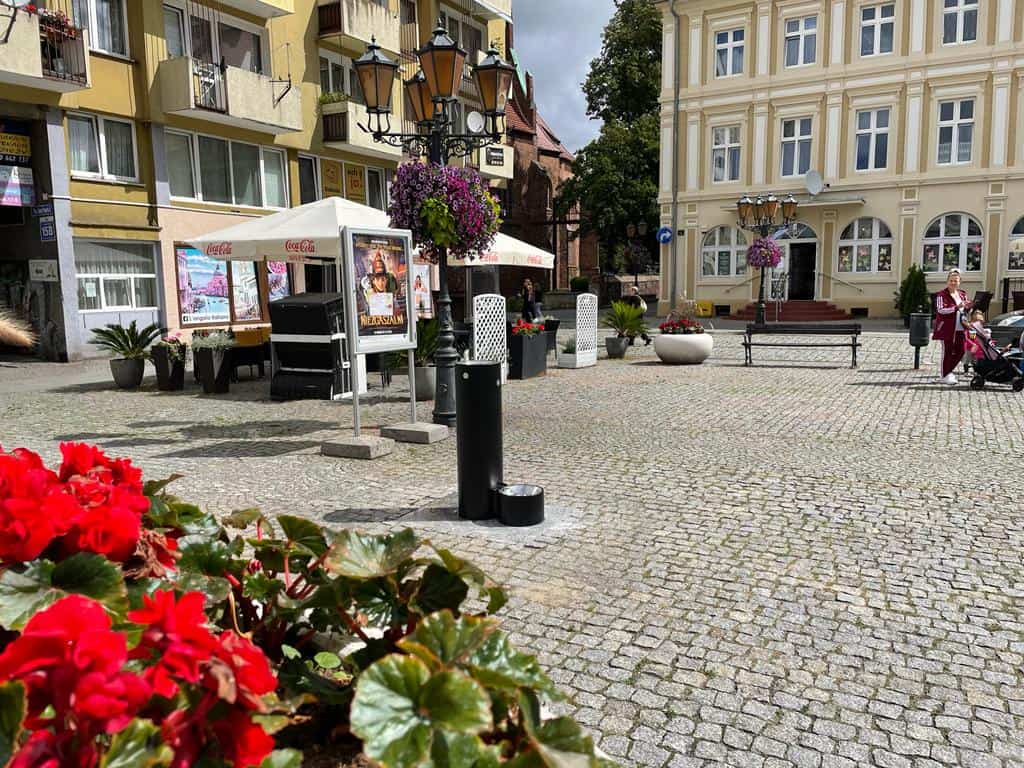
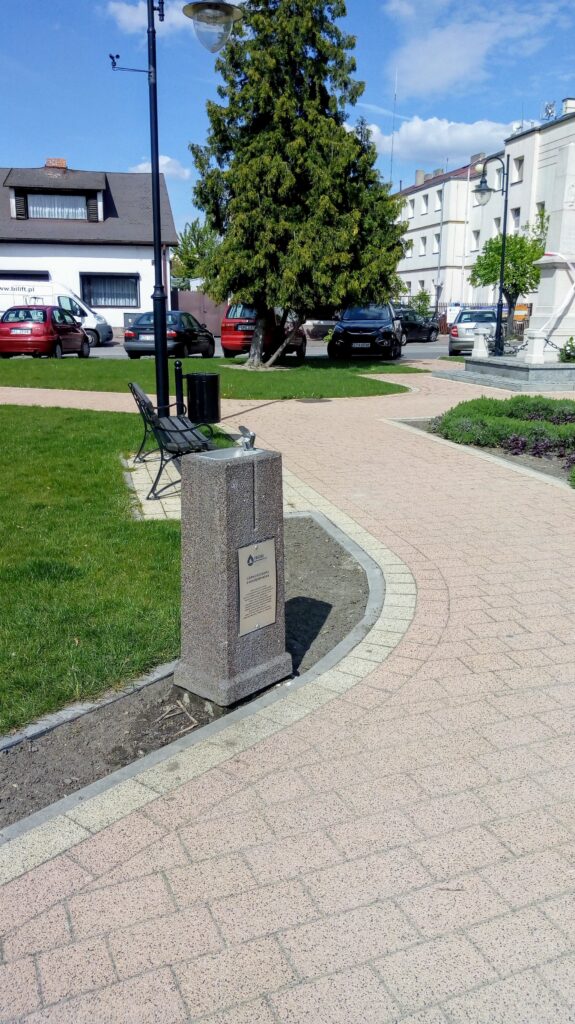
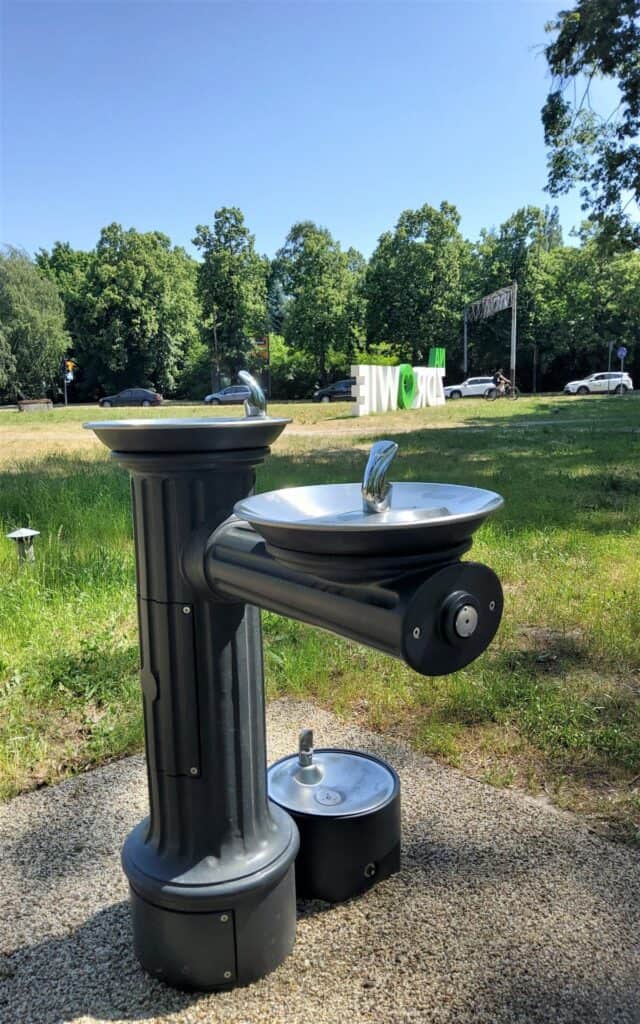
Water is a precious natural resource. Designers who implement drinking water outlets in their projects can contribute to the sustainable management of water resources. This can include the use of water-saving technologies, water recycling or reducing water waste.
The placement of drinking water springs in public spaces helps to improve access to water, especially during hot periods. This is particularly important for the elderly, children and tourists, who need access to water during walks or outdoor activities. Unlimited access to drinking water means greater comfort for residents and increased functionality for cities.
Drinking water springs can become places of social integration. They fit in perfectly with sports and recreational areas to create a friendly and pleasant environment that encourages rest, relaxation and social exchange.
If drinking water outlets are placed in the vicinity of residential or commercial buildings, they can increase the attractiveness of these properties and have a positive impact on their market value.
In summary, designers incorporating drinking water springs into their designs not only increases their attractiveness and functionality, but also contributes to promoting healthy lifestyles, reducing plastic waste, enhancing green image and creating friendly and sustainable public spaces. This is good for the community, the environment and overall well-being. Being eco is trendy.
In this section you will find a range of practical information related to our solutions. In the articles, we share our experience, discuss implementation steps and highlight good practices. It is a reliable source of information and advice on the provision of drinking water in public spaces, the legal regulations in this area, the benefits of installing drinking water dispensers and the technological aspects in this field.
We look forward to reading!

Water is the foundation of our existence, playing a key role in the functioning of the human body. Its consumption is of paramount importance in maintaining health and the proper functioning of all body systems. Unfortunately, many of us downplay this issue, not realising the numerous benefits of regular water consumption.
Water is an essential component of our body, accounting for as much as 60% of adult body weight. It is involved in many key processes, such as transporting nutrients, regulating body temperature, removing toxins and maintaining adequate blood pressure. Hydration is essential for the proper functioning of all cells, tissues and organs.
During physical activity, the body uses more water through sweat, making fluid loss greater. Therefore, drinking water before, during and after training is key to maintaining adequate hydration levels, improving physical performance and minimising the risk of dehydration.
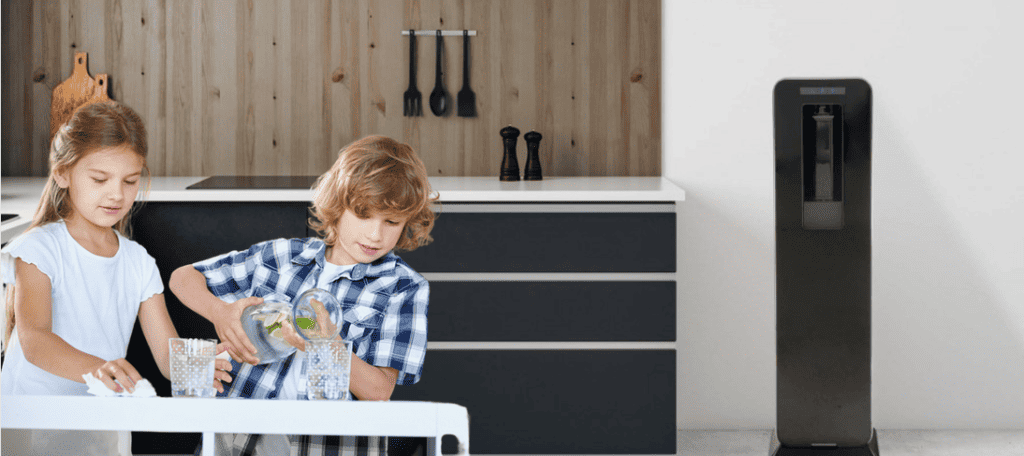
Regular consumption of water has a positive effect on the digestive system. It aids digestion, facilitates the absorption of nutrients and prevents constipation. In addition, drinking water can support metabolic processes, which can be important for those with a healthy lifestyle and who are concerned about maintaining a healthy body weight.
Hydration plays an important role in maintaining healthy and firm skin. Adequate water helps to hydrate the skin from within, which can help to reduce wrinkles, improve elasticity and the overall appearance of the skin. It is a natural 'liquid beauty' that requires no cosmetics.
To enjoy the full benefits of drinking water, it is important to establish a healthy fluid consumption habit. Here are some simple tips:
The conclusions are clear - regular water consumption is key to maintaining health and wellbeing. Adequate hydration supports the body's vital functions on many levels, from the cardiovascular system to the appearance of the skin. It is therefore worth ensuring that water is a regular part of our daily lives. It's a simple but highly effective measure that will bring long-term benefits to our health. With modern drinking water dispensers in our surroundings, developing good habits becomes incredibly easy and convenient. Fresh and tasty water is always within reach, and we don't need to carry water bottles or bulky cans. With our solutions, it's that simple.
In this section you will find a range of practical information related to our solutions. In the articles, we share our experience, discuss implementation steps and highlight good practices. It is a reliable source of information and advice on the provision of drinking water in public spaces, the legal regulations in this area, the benefits of installing drinking water dispensers and the technological aspects in this field.
We look forward to reading!
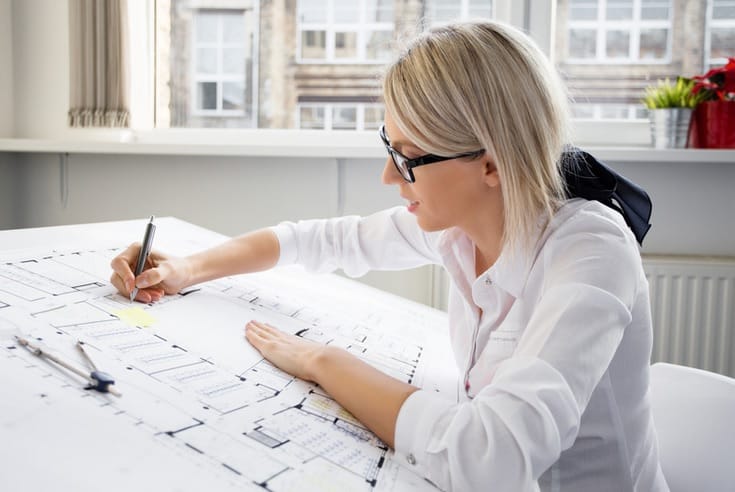
At the end of 2020, the European Parliament adopted a directive regulating the quality of drinking water in the countries of the European Union, and aiming to ensure access to drinking water for all, particularly vulnerable groups who have hitherto found it difficult to access water.
The implementation of the directive is linked to the European Green Deal, but also responds to the demands of more than 1.8 million Europeans who signed up to the 'Right2Water' citizens' initiative, which aimed to improve access to safe drinking water for all Europeans.
According to the guidelines of the new directive numbered 2020/2184, ensuring access to drinking water for all social groups is to be achieved by installing public drinking water dispensers and dispensers in buildings and urban spaces. The idea of public water stations is already well-known in Poland and has been successfully implemented in urban areas. It is a way for local water utilities to promote their operations and their water, and an idea for municipalities to encourage residents to be more eco-friendly.
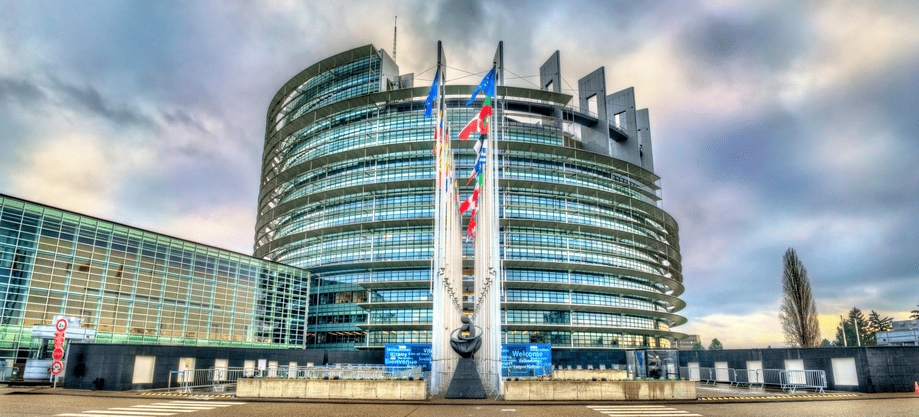
In addition, networked water dispensers installed inside facilities and buildings are now becoming highly desirable. Bottled water or water in cans is becoming obsolete as it is expensive to purchase and store, water containers need to be replaced and disposed of, and inadequate transport and storage of bottles has a detrimental effect on the quality and taste of the water. Hence the growing popularity of bottleless water dispensers. These devices are installed in schools, offices, clinics, sports facilities and office buildings. They allow employers to meet the requirements of providing water for employees and realistically reduce the costs associated with purchasing water. They will now also help municipalities to meet the new regulations arising from the directive.
When it comes to solutions for indoor use, the number of models available in our range is truly extensive. There are floor-standing, countertop or wall-mounted units. Importantly, some of the dispensers have cooling and carbonating functions - for all those who prefer only carbonated water. With today's realities in mind, touchless, sensor-operated dispensers have appeared in our range. Their use is intuitive and, at the same time, very safe.

We are facing a time of change and challenges. But it is worth pointing out that the new EU rules are a response to the needs of society. They will help to improve our lives and the state of our environment. The Union gives some time for changes, but it is worth remembering that time passes quickly, so it is worth using already tested solutions and learning from the experience of others.
Contact us and we will help you to choose the most optimal solutions.
In this section you will find a range of practical information related to our solutions. In the articles, we share our experience, discuss implementation steps and highlight good practices. It is a reliable source of information and advice on the provision of drinking water in public spaces, the legal regulations in this area, the benefits of installing drinking water dispensers and the technological aspects in this field.
We look forward to reading!
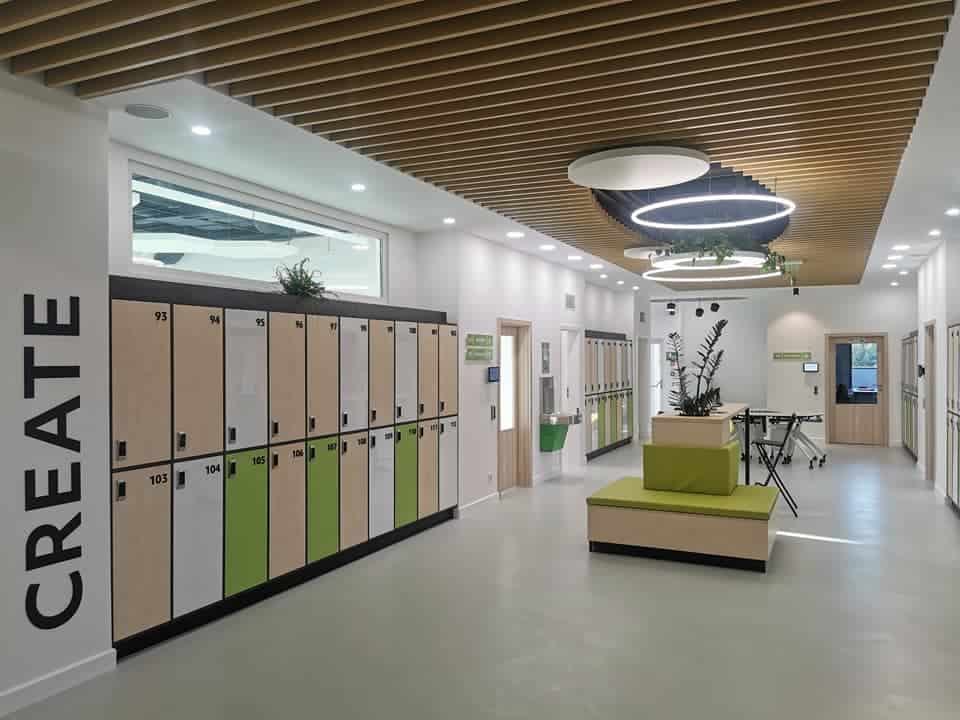
Did you know that your project can have a positive impact on the environment? Instead of supporting the production of plastic bottles, you can use eco-friendly solutions! Take a look at our water dispensers, which will fit perfectly into your projects.
We have already seen pictures, videos and information about the plastic bottles that are polluting our planet. It's a problem we can tackle together. Our water dispensers are a solution that eliminates the need for plastic bottles. This way, there will be less litter in your project and you will help protect the environment.
Looking after our health has become an integral part of our lives. Why not combine this with ecology? Our water dispensers provide easy access to clean drinking water, which is not only good for your health but also environmentally friendly. This is why more and more people are choosing eco-friendly solutions instead of buying bottled water.
Remember that tap water is safe and meets the highest quality standards. Our water dispensers provide access to clean, cool and sparkling water straight from the tap. This not only saves time, but also allows us to enjoy the taste of our treasure - Polish tap water.
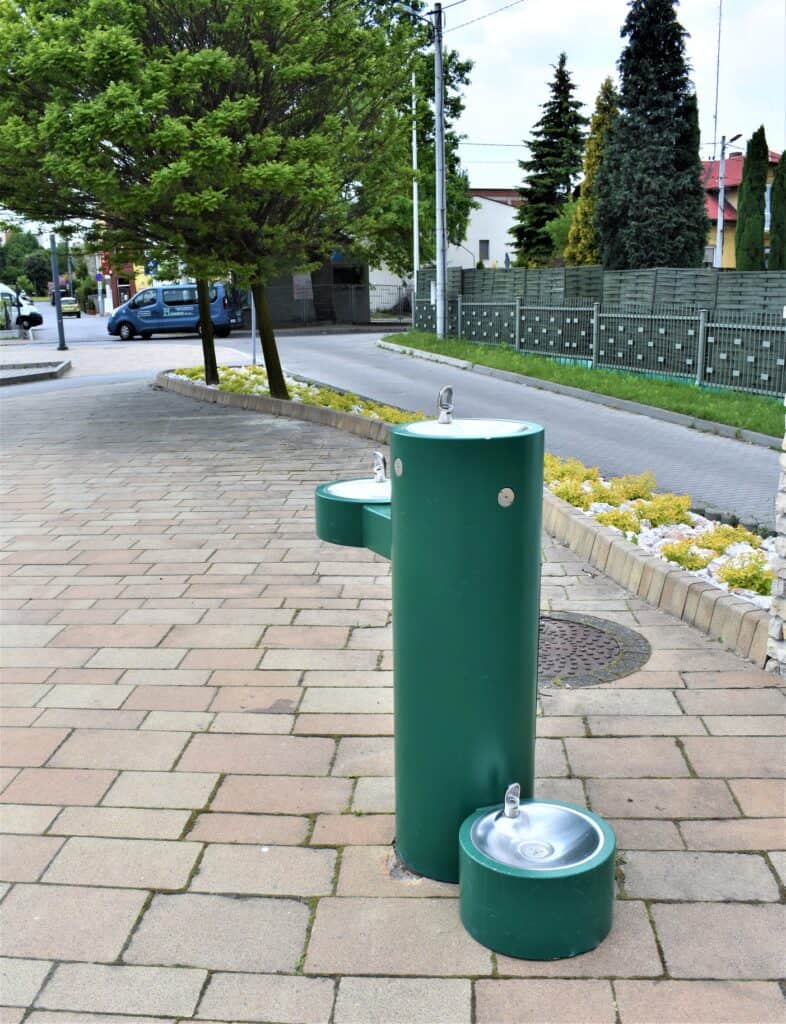

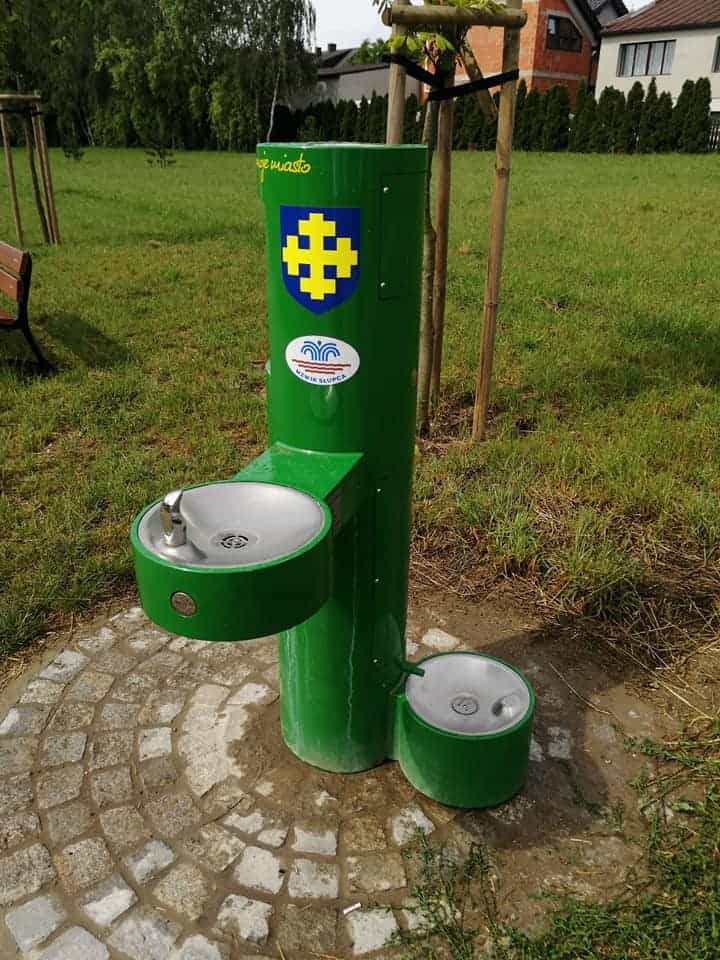
Already, many cities have abandoned bottled water in favour of eco-friendly alternatives. We can help your project become part of this positive change. With our water dispensers, residents and employees can enjoy clean water without plastic waste.
Our water dispensers are not only springs, but also functional devices with options for cooling and carbonating water. As a result, even those who were previously unconvinced about drinking water straight from the tap are now happy to pick up this healthy habit.
Our water dispensers are designed with safety and hygiene in mind. All units meet the highest standards and some are even equipped with UV lamps, ensuring the highest quality of water supplied.
We will customise a water dispenser to fit your project perfectly. We have a variety of models, with or without a filter, with a gas option and even with a bottle counter to show how much plastic waste has been saved.
Join the green trend Join the green revolution! Choose our water dispensers for your project, supporting environmental protection and promoting healthy habits. Contact us and our representatives will help you choose the best solution. Stop supporting plastic bottles - go eco!
In this section you will find a range of practical information related to our solutions. In the articles, we share our experience, discuss implementation steps and highlight good practices. It is a reliable source of information and advice on the provision of drinking water in public spaces, the legal regulations in this area, the benefits of installing drinking water dispensers and the technological aspects in this field.
We look forward to reading!
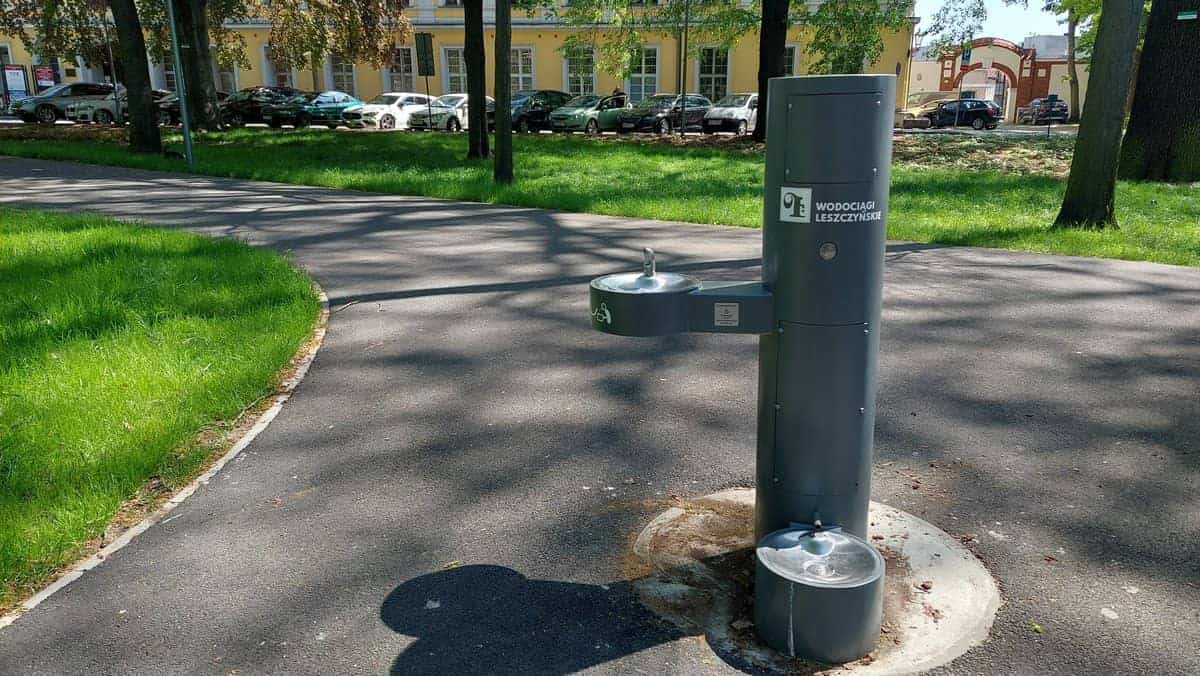
Clean and healthy drinking water is a key element for a healthy lifestyle and social well-being. It is therefore of utmost importance that residents of cities and municipalities have easy access to exceptional water quality. One step in this direction is the installation of drinking water sources in public areas. It is worth taking a look at why municipal authorities are increasingly opting for this initiative and the benefits this brings to local water supply.
The installation of drinking water spigots in municipal and communal areas provides residents with easy access to fresh and clean drinking water. This is especially important during periods of hot weather or when immediate access to water is needed in emergency situations. Residents no longer have to rely on plastic water bottles, which is not only more convenient but also more environmentally friendly.
The installation of sprinklers in public spaces can be part of the promotion of a healthy lifestyle. It encourages people to drink water instead of sugary fizzy drinks or other high-calorie drinks. This works in favour of the health of the population and contributes to the fight against the problem of obesity and other diseases associated with excessive sugar consumption.
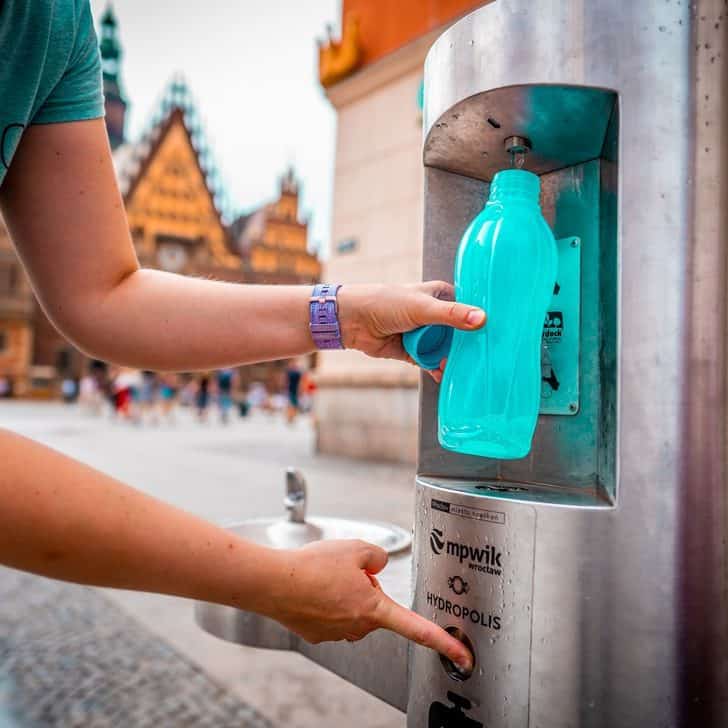
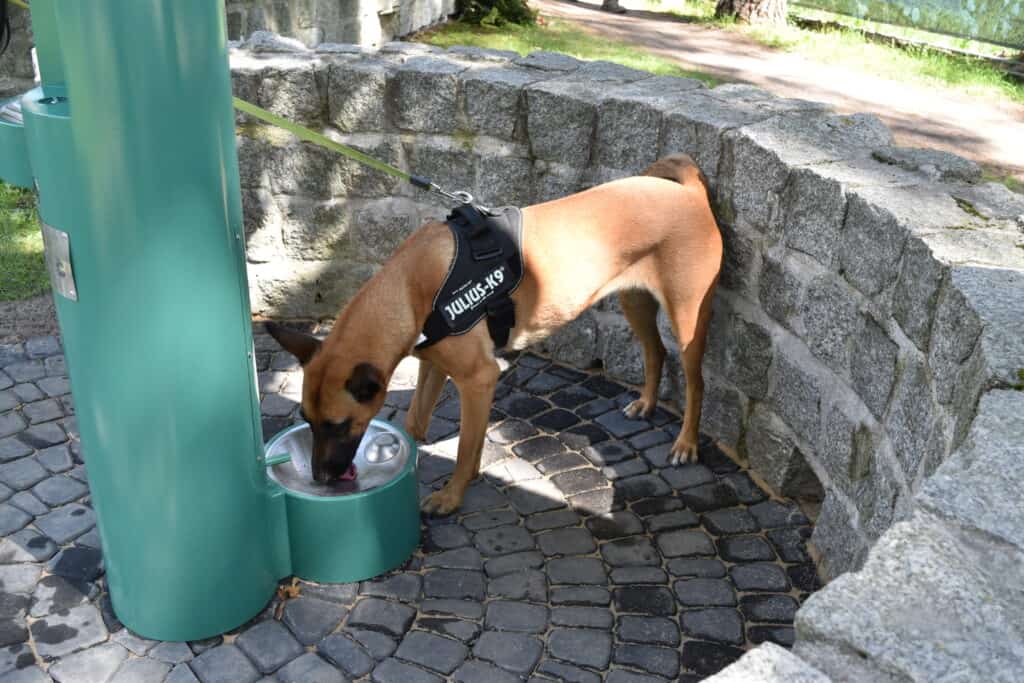
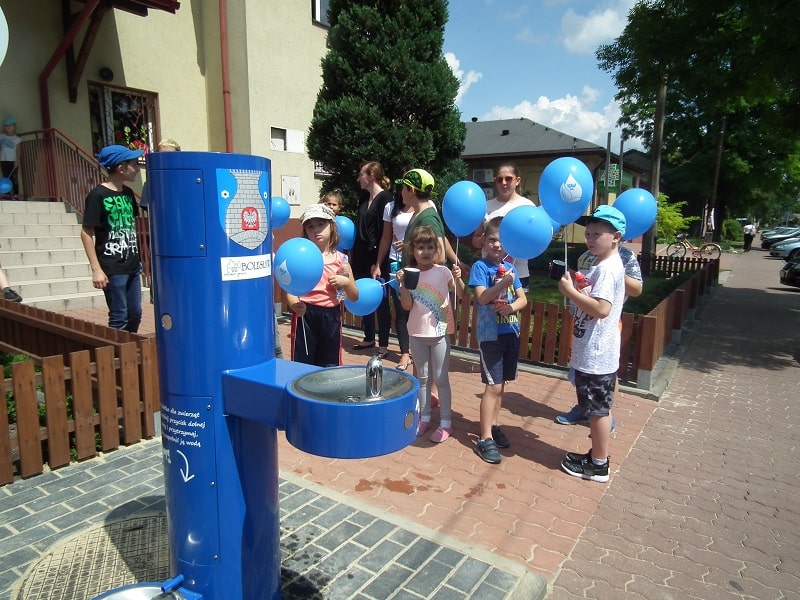
Zdroje is an excellent promotion for local waterworks. By popularising the use of water from municipal sources, local waterworks can gain more customers. This, in turn, translates into more revenue, which can be reinvested in the infrastructure and quality of the water supplied.
Water from municipal springs is much cheaper than bottled water. The installation of drinking water springs is therefore also beneficial from the point of view of the city or municipality's budget and residents. Less expenditure on the purchase of bottled water in offices means more funds for other public projects.
Every sprinkler is a step towards reducing plastic consumption. Plastic water bottles are one of the main sources of environmental pollution. The installation of drinking water sources contributes to reducing plastic waste and takes care of the state of our planet.
The installation of drinking water sources in municipal areas is a step in the right direction. It provides residents with access to healthy water, promotes healthy lifestyles, supports local water supply, saves public funds and contributes to environmental protection. It is an investment that has a positive impact on the quality of life of the residents and the local community and is an important step towards sustainable development. This is why more and more investors are putting these solutions as a must have in projects. Are you looking for inspiration on this topic? We look forward to working with you!
In this section you will find a range of practical information related to our solutions. In the articles, we share our experience, discuss implementation steps and highlight good practices. It is a reliable source of information and advice on the provision of drinking water in public spaces, the legal regulations in this area, the benefits of installing drinking water dispensers and the technological aspects in this field.
We look forward to reading!

Water is an essential component of a healthy diet, especially for children during their development. Drinking water instead of sweetened beverages has a number of health benefits, and the introduction of water dispensers in schools can make a significant contribution to promoting this healthy habit.
The first important argument for the consumption of water by children is that water is essential for the proper functioning of the body. Water is the main component of the human body and plays a key role in metabolic processes, digestion, nutrient transport and body temperature regulation. For a developing child's body, maintaining adequate hydration levels is particularly important.
An additional aspect is oral health. Water does not contain harmful sugar, which is present in sweetened drinks and can lead to the development of tooth decay and other dental problems. Consuming water instead of fizzy drinks or sugary energy drinks has a positive effect on oral hygiene.
The introduction of water dispensers in schools is key to promoting water drinking among children. Water dispensers provide easy access to fresh and chilled water, which can encourage pupils to choose water as their primary beverage. Additionally, the presence of dispensers in schools eliminates the need for drinks sold in vending machines or canteens, which are often high in sugars and artificial additives.
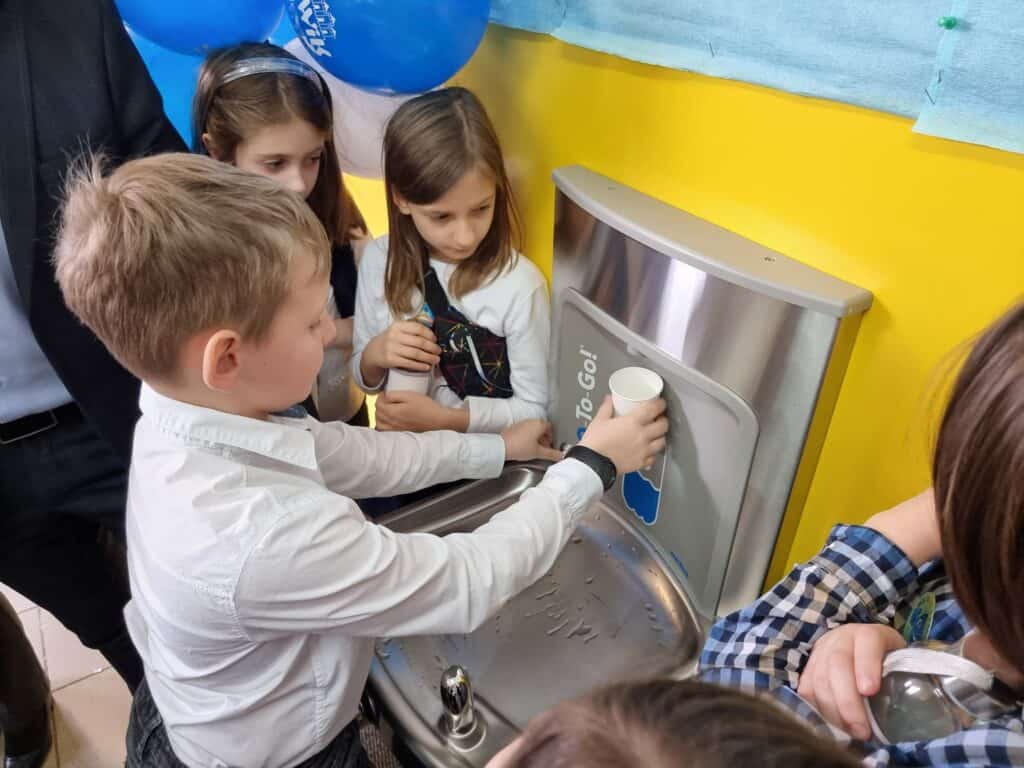
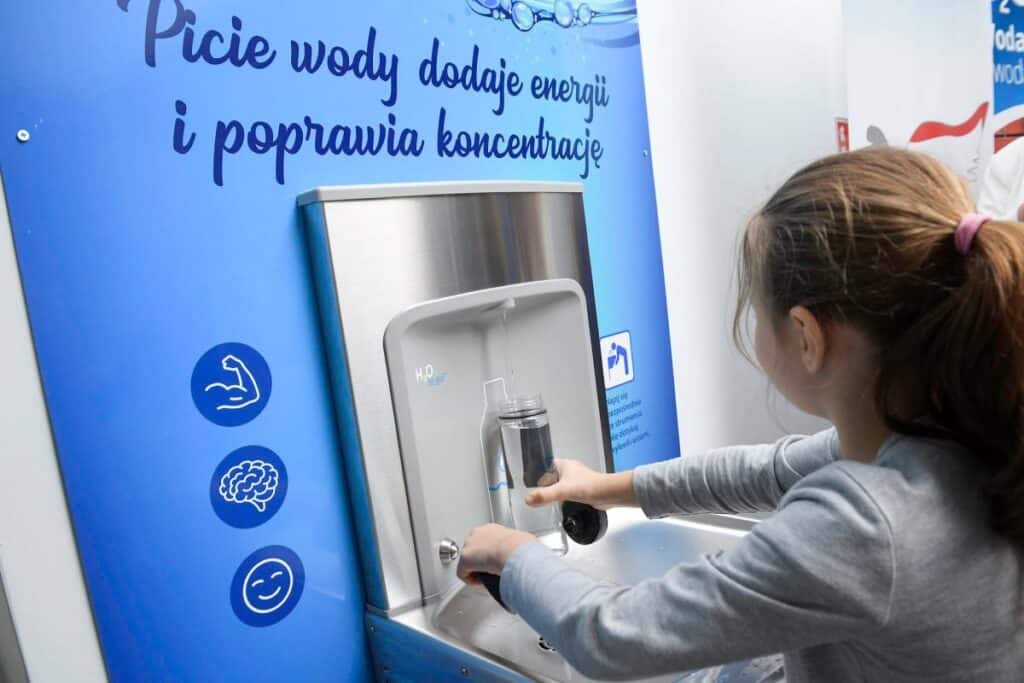

Education about the health benefits of drinking water also plays a key role. Teaching children about the impact of hydration on their health and providing them with information on the harms of excessive consumption of sweetened beverages can lead them to make more informed food choices.
In conclusion, drinking water instead of sweetened drinks has numerous health benefits for children. The introduction of water dispensers in schools is an effective strategy to promote this healthy habit, providing easy access to fresh water and eliminating the need to reach for highly processed drinks. Education on the health benefits of drinking water further reinforces children's awareness of the role water plays in keeping them fit and healthy.
In this section you will find a range of practical information related to our solutions. In the articles, we share our experience, discuss implementation steps and highlight good practices. It is a reliable source of information and advice on the provision of drinking water in public spaces, the legal regulations in this area, the benefits of installing drinking water dispensers and the technological aspects in this field.
We look forward to reading!
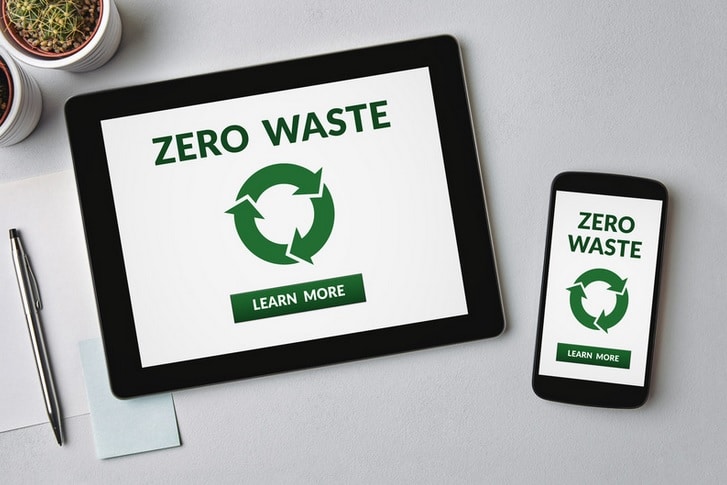
For some time now, we have been hearing more and more about the idea of zero waste and different ways of consuming less. Is zero waste in construction even possible? What can we really afford to do?
In the construction industry, we have a lot of solutions - technological, design or management-related. How important is choosing the right product in reducing resources?
With increasing environmental awareness in society, consumer demands for the quality and functional qualities of the products they purchase are also increasing. We try to make our surroundings not only pretty, but also functional. We choose ecological paints, create interesting installations that, for example, use leftover water to irrigate plants. This does not surprise us, and among the enquiries from our customers, the topic of appliances that are not only modern and economical, but also have a real impact on improving the lives of users and contributing to the implementation of ecological measures in life, comes up frequently.
How does the idea of sustainable construction and multi-criteria certification help to save resources?
This idea is causing the construction industry in Poland to change and evolve strongly. Developers wishing to distinguish their offer on the market are introducing a number of amenities in their facilities, thanks to which they raise their standard and score in the eyes of increasingly demanding customers. This results in thoughtfully designed and intelligent buildings that are user-friendly and environmentally friendly. For example, the installation of networked water dispensers inside buildings not only makes it possible to meet the obligation to provide drinking water to employees and guests, to increase its utility value, but also makes it possible to reduce the amount of plastic waste entering the environment thanks to such solutions.
How important is product lifecycle management in minimising waste?
These days, less is more, which is why campaigns such as less plastic or responsible shopping are so popular. But in order to be able to implement these measures, it is necessary for interesting alternatives to existing solutions to appear on the market. Eco-friendly solutions are those that do not end after a single use, but which will serve us many times over. These are solutions whose production does not generate huge amounts of toxins or require the consumption of hectolitres of water, and whose end result is that they are not recyclable or biodegradable. Therefore, all these aspects of the life cycle of products should be taken into account when trying to create solutions that are good for our environment, ones that will serve our planet at every stage.

How can the creation of awareness and the opportunities available to us - education in the area of zero waste in construction - take place?
Awareness-building often takes place by choosing solutions that make a real contribution to minimising waste in the environment. In recent years, bottleless water dispensers have become very popular; installed in facilities, they make it possible to provide access to drinking water for all those who are thirsty, but above all to show others that there are such devices at all, that tap water is healthy and tasty. Creating awareness is best started from the youngest, for example by installing water springs in schools. In this way, we instil in children ecological habits that they will want to continue into adulthood.
Is it even worth it?
Speaking of the solutions proposed by Zdrojownia: springs, distributors and drinking water springs, we can point to the real financial benefits we will achieve by installing them in our facilities. These are savings related to the reduction of costs associated with the purchase of bottled water, the need to store it, or waste disposal. In addition, we are also talking about non-quantifiable benefits such as a real impact on improving the environment, creating pro-ecological and pro-health behaviour, raising the standards of buildings, increasing their functionality and performance. In fact, ecology should not be measured in financial terms. Ecology is a necessity of our times, an opportunity to improve and ensure good living conditions on our planet.
In this section you will find a range of practical information related to our solutions. In the articles, we share our experience, discuss implementation steps and highlight good practices. It is a reliable source of information and advice on the provision of drinking water in public spaces, the legal regulations in this area, the benefits of installing drinking water dispensers and the technological aspects in this field.
We look forward to reading!
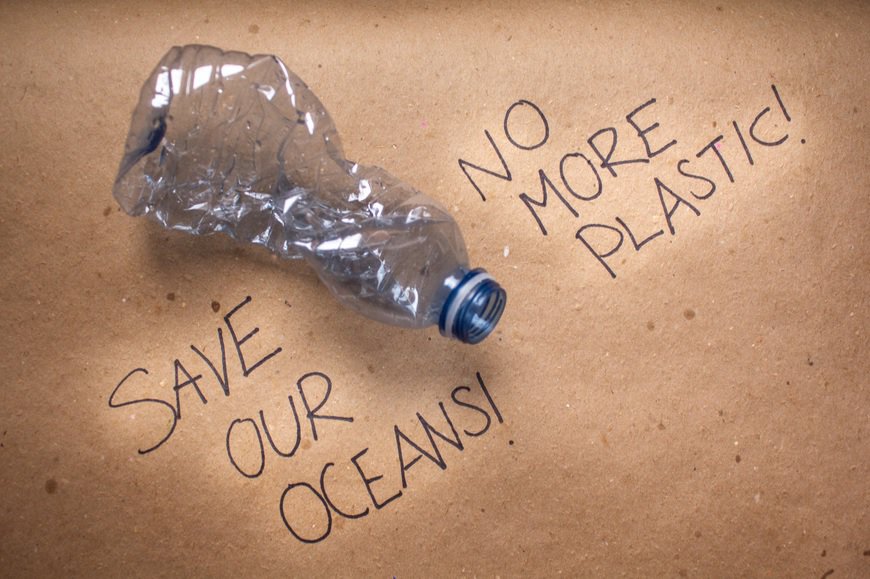
Have you ever wondered how many plastic bottles end up as waste in our environment every day? On the web or on television, we can find videos and photos showing downright piles of empty plastic bottles, or seas, lakes and rivers full of them. Plastic does not decompose, staying in the environment for hundreds of years, plastic particles are eaten by marine animals, plastic penetrates crops - all this means that we 'eat' plastic every day, which certainly does not make us healthier. Environmentalists are sounding the alarm that we are facing a plastic doom, but I don't think we are necessarily taking their words seriously yet, and the threat is real.
There's a trend at the moment for being fit - eating healthily, exercising and drinking more pure water, because only adequate hydration makes us feel better and is good for our health. So, we go to the shop and buy more plastic-wrapped water, the plastic waste bins are bursting at the seams filled with plastic bottles, because since you have to drink 1.5-2 litres of water a day, so everyone who drinks bottled water throws 1-2 empty bottles into the rubbish every day. That's for one person, and if there are 2 people in the household, that already makes us a number of 4, and if there are children? That's even more. And let's think that this happens in every flat, in every home... what do we get? An alarming amount of rubbish in the form of plastic bottles!
Have you ever wondered what happens to this waste? They languish in landfills, ending up in our lakes, forests, seas? Only some of it is recycled, and processing it requires a lot of energy and water. Both the recycling and the disposal of plastic bottles result in huge quantities of toxic and carcinogenic substances entering our atmosphere. Is this what we breathe? Nice? Not so much...
For years, states, local governments and various foundations have been educating the public and encouraging the use of various eco-friendly solutions to ensure that our actions do not have such a negative impact on the planet. We are eliminating plastic bags, plastic straws, cutlery, cups and trying to reduce the consumption of water in plastic bottles. But what is the alternative? It's simple. There are many bidons on the market, reusable bottles that each of us, when leaving home or work, should fill with clean tap water and enjoy its freshness. Yes, yes - tap water is perfectly drinkable, but it must meet very high standards, be clean, at the right temperature and free of micro-organisms. And this is exactly what Polish tap water is like, as the water supply companies write and boast about on their websites and social media accounts. There are towns and cities that have completely given up bottled water when working in the magistrate's office, at customer service points, during picnics and city festivals, and local government officials encourage in various campaigns to give up plastic and choose ecological solutions.

Such solutions are the springs, sprinklers and drinking water dispensers installed in urban areas and public spaces. These modern devices solve the problem of water distribution in offices, office buildings, hospitals, clinics or to employees. Those who have so far been reluctant to drink water simply from the kitchen or bathroom tap (because this is indeed not the best way) are eagerly opting for dedicated devices, which are not infrequently equipped with water cooling and gassing functions. These dedicated devices are used solely for water distribution, and can be fitted with additional filters or disinfecting UV lamps if desired.
Using them is completely safe, hygienic and simple. For many years now, we have been supplying offices, offices, schools and urban areas with springs, spas and drinking water stations. These functional solutions make it possible to access drinking water wherever it is needed: at work, when walking, when doing errands at the office, etc. All you have to do is carry a bottle with you and fill it up at the dispenser. Some solutions allow you to drink water directly from the dispenser, without using a cup or bottle. But these days we recommend touchless dispensers, those that dispense water without you having to press the activation buttons. Such a solution is the A171-BF12 and BF16 series, as well as those models but equipped with very useful counters indicating how many plastic bottles have not reached the environment (-BCD models).
It is also worth looking at our indoor units that cool water but also carbonate it. The wide range of products allows you to choose a model with the water types of your choice: room-temperature water, chilled water, carbonated water, hot water or lightly carbonated water.
All units can be retrofitted with water filters or disinfectant UV lamps, or you can choose a model with an integrated UV lamp. If you would like to find out more about these solutions, please contact our representatives, they will explain everything and allow you to choose the most optimal solution. Stop buying water in plastic, be eco.